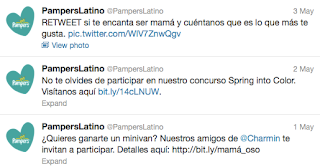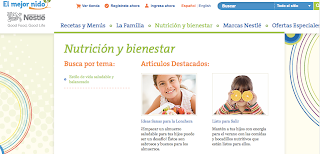My 5 Favorite Ways to Optimize Content for the Hispanic Market

Image credit: icetray / 123RF Stock Photo
In recent months I have noticed and followed the hot topic of content creation for the Hispanic market in the United States. This seems to be taking place thanks to recent shifts on Google algorithms that are asking for better online content, instead of artificial SEO. As the latest Portada issue explains, these changes in algorithms emphasize the need for unique and high quality content, especially for the Hispanic market, which is definitely underserved. Algorithms won’t forgive thin content, or over-stuffing anymore, and companies are now taking action on what seems to be the perfect opportunity to create great content for this consumer.
What is Content Marketing
So what is Content Marketing? Content Marketing is defined as the creation and sharing of content to drive a successful action by the consumer. Content can be anything that relays a message to the consumer without being intrusive. It could be a story, an article, recipes, and anything that is helpful or informative to consumers, but ultimately drives them to do something about a product or service. Companies act as publishers of their own brands, and although it is pretty standard now, the way content is shared and the quality of content are two major components that are shifting.
According to PR Newswire Director of MultiVu Latino Division Manny Santos, SEO is shifting more towards creating useful content for audiences and less about keyword selection and link structure.
So as this content is shared online, it behooves all of us who create it, to make it more interesting and real, and not only fit words to create better rankings through SEO tactics. That being said, it is still important to use keywords that are pertinent to the Hispanic market, and which are usually low competition, especially when they are in Spanish.
Importance of Having Great Content
Having content that speaks to the heart of the market and is non-invasive, replaces old advertising tactics such as the sell-in-your-face approach. Old advertising techniques have been shifting for a while because companies realized that customers shut off when they felt they were being sold to. Customers like to learn and receive useful information about topics they are interested in, and not to be pushed to buy something. It is no different with the Hispanic market. Hispanics like to consume content that is relevant, easy to find online, easy to share, and that is entertaining.
I see that although this market is not being served, there is a great opportunity for companies to create great content that really pertains to this customer, that is well executed, and that it makes sense. There is a lack of competition on the web for keywords in Spanish, and some English key terms that could be used for this market. So, if this content is well optimized, it could quickly rise to the top of the engines.
Hispanics are also early adopters when it comes to digital consumption, as mentioned in this article by Adweek: Hispanics are the Most Digitally Savvy Group. If they are really savvy and there is hardly much competition with content, then there are great opportunities for content to be optimized and create a great impact, and most importantly, an early impact.
So, through all my research and work, I have found that there are many ways to optimize content that is culturally relevant, speaks in their language, relays unique content, and is simple and intuitive. These are the ones that work the best for me, and are very easy to implement.
Here are My Top 5 Favorite Ways to Optimize for the Hispanic Market:
1. Social Media
You don’t have to write long blogs or create intricate articles and newsletters to relate a message to Hispanics. All you need are microblogging tools to communicate. Social media such as Twitter, Facebook, and Pinterest are excellent sharing tools to relay a message to your customers, and get to know them. You can share a quote, a tip, a link or ask questions, engage with the Hispanic consumer in their language of preference, and talk about matters relevant to them.
In this case, Pampers Latino tweets engaging topics, so mothers can talk about their babies. They also promote a game, and cross-promote with Charmin. This particular tweet account is in Spanish because it relates to women who are first or second generation mothers who still communicate in Spanish, or prefer to speak in this language.
2. E-newsletters
Although I mentioned that you don’t have to write very long content to convey a message, newsletters are still an excellent way to target Latinos with great content. Whether is recipes, how-to’s, or stories about other customers dilemmas and cures, this is a medium that can be highly segmented by language, demographic, and behavior. There are many instruments such as Constant Contact, Mail Chimp, and Mad Mimi, which can help you get the content out to your distribution list. They allow you to segment your pieces, and to test which ones work best for your Latino customers.
3. Articles
Articles, just like newsletters, are excellent in diffusing knowledge about your products. In this case it is by enticing customers through nutritious recipes in both English and Spanish. Utilizing recipes that are germane to the Latino consumer, together with products that are very popular, such as Nido milk, helps to create the right environment for more purchases. In this case, nutrition and recipes are mixed, which are both very important to the Hispanic consumer, especially for mothers who are concerned for their family’s nutrition and well-being.
4. Blogs
Blogs don’t have to be complicated or long either. They can be small story-like snippets in English or Spanish, depending on your consumers, or it could be in both languages, like in the case of Tecate. They have mixed both languages to cater to the male 18-34, who is bilingual, and they relate to them with funny stories related to the commercials that are already out on TV.
5. Videos
Videos are also excellent tools because Hispanics love media. In this case, a famous Hispanic spokesperson was asked to talk about drinking water to lower calorie intake, which is usually a concern in the Hispanic community. She drinks Nestle water, while giving a tip about being healthy without trying to sell the water deliberately to the consumer. It’s all about having a story and a purpose to the product she is endorsing.
If you are interested in creating content for the Hispanic market, these are 5 excellent ways to start. If you have any other ways that you create content that works for you, please share!
Please leave a comment below if you are interested in sharing your thoughts, comments, and ideas about this blog or topics I can write about. Thanks!


